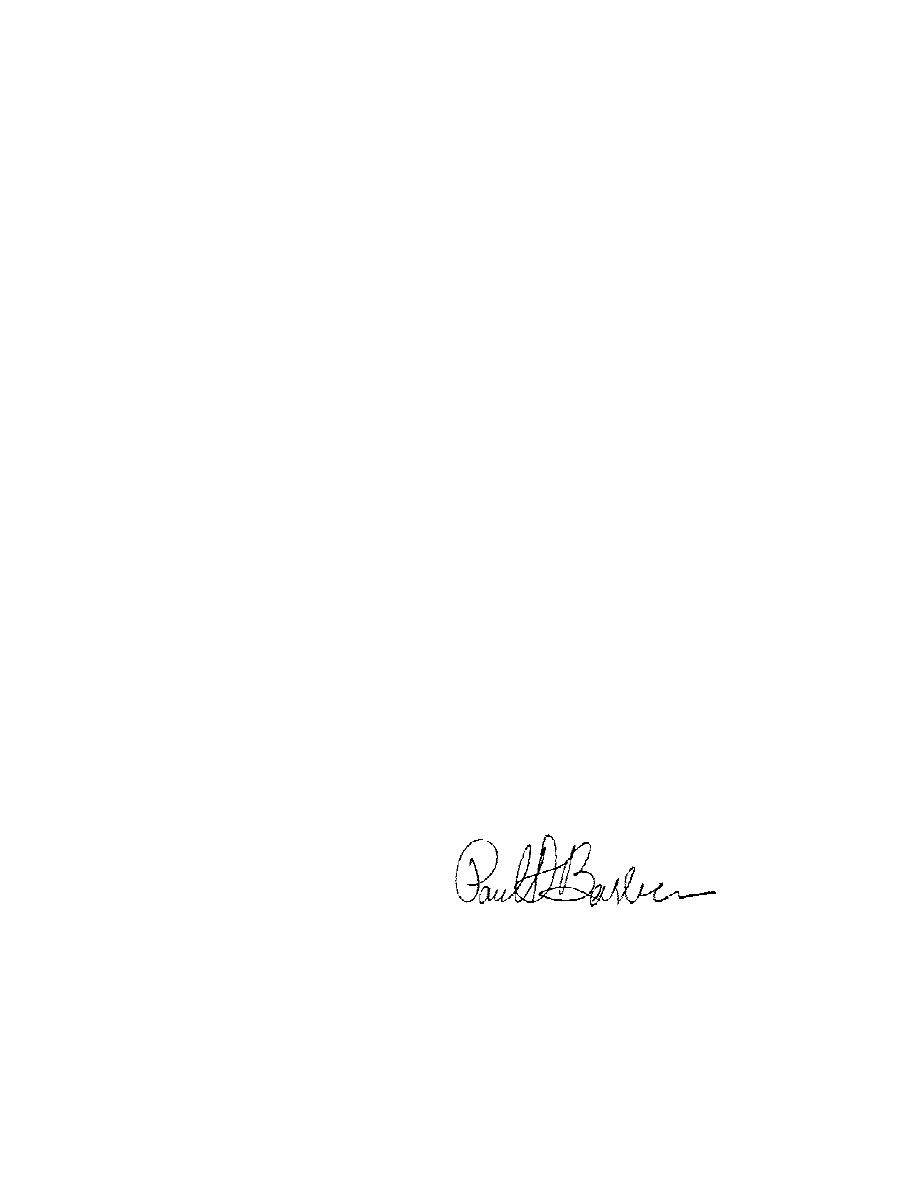
ETL 1110-2-352
31 Mar 94
backs of gravity walls can be accomplished using a
walls founded on competent rock foundations satisfy
finite element program such as SOILSTRUCT
this criterion.
(Ebeling, Peters, and Clough 1992). Unlike conven-
(b) The backfill soil does not creep. Compacted
tional equilibrium procedures (Section 4a), an SSI
soils classified as SW, SP, GW, and GP according to
analysis does not require the use of predetermined
the Unified Soil Classification System (American
pressure distributions between the soil and the wall.
Society for Testing and Materials 1990) do not exper-
Instead, it allows for development of these pressures
ience significant creep movements. The simplified
through soil-structure interaction by simulating the
procedure is also applicable to select SM backfills
staged construction that occurs. The computer pro-
with nonplastic fines that do not creep.
gram SOILSTRUCT can model the nonlinear stress-
strain behavior of the soil, and allow for relative
(c) No special features that reduce or eliminate
movement between the soil and the structure by
interface friction exist along the interface between the
incorporating interface elements in the mesh.
back of the wall and the backfill. Examples of
special features that would reduce interface friction
(2) Soil-structure interaction analyses are also
include bituminous coatings and synthetic barriers
especially useful for analyzing retaining structures
with low interface friction values.
founded on either soils or compressible rock founda-
tions. Differential settlements within the foundation
(d) The interface between the back side of the
affect the magnitude of the shear force that the back-
wall and the backfill is capable of developing inter-
fill exerts on the wall. The SSI analysis procedure
face friction values of δ > 0.7φ, where φ is the effec-
has been successfully used for a wide variety of
tive angle of internal friction for the soil comprising
problems, including the Port Allen and Old River
the backfill. This is satisfied by SW, SP, GW, and
locks (Clough and Duncan 1969) and, more recently,
GP backfills compacted against concrete walls. It is
the lock at Red River Lock and Dam No. 1 (Ebeling
also satisfied by SM backfills with nonplastic fines
et al. 1993).
compacted against concrete walls.
(3) A soil-structure interaction analysis is recom-
(e) The water table within the backfill is hydro-
mended for those structures for which the simplified
static. If the variation of pore water pressure is not
procedure is not applicable (Section 5a) or for those
hydrostatic, the values of D1 and D2 in Equation 3
cases in which a more precise evaluation of the shear
should be selected to represent the average conditions
force is required. Soil-structure interaction analyses
in the backfill.
are recommended for U-frame locks, retaining struc-
tures founded on soils, and structures with compli-
b. Soil-structure interaction analysis.
cated geometry.
(1) A complete soil-structure interaction analysis
(Ebeling 1990) for computing shear loads along the
FOR THE DIRECTOR OF CIVIL WORKS:
1 Appendix
PAUL D. BARBER, P.E.
Chief, Engineering Division
Directorate of Civil Works
6



 Previous Page
Previous Page
